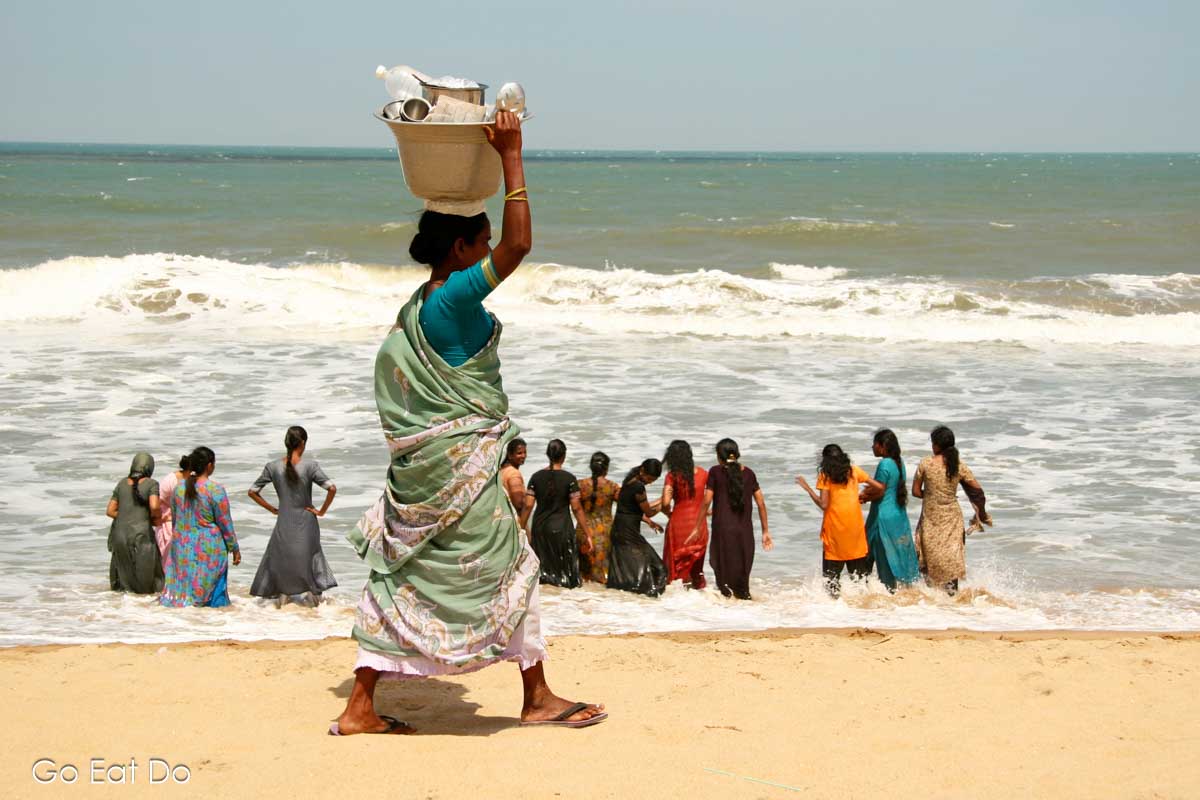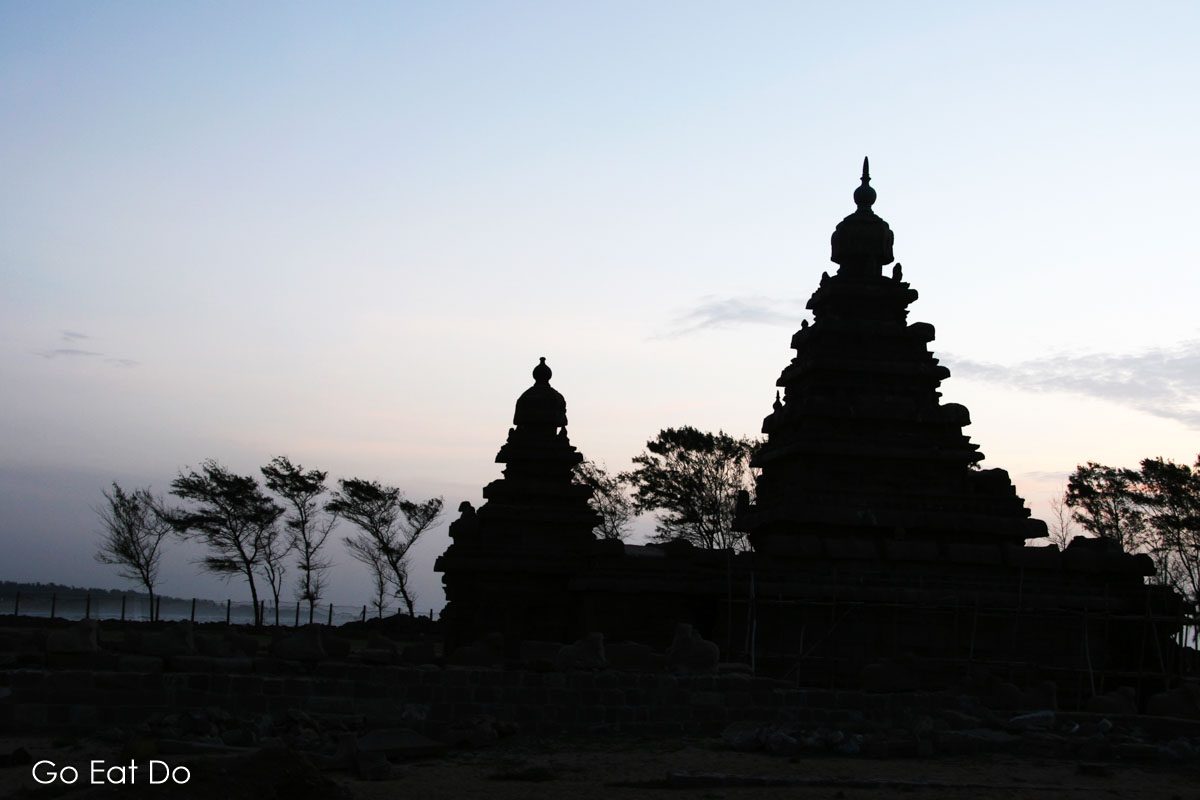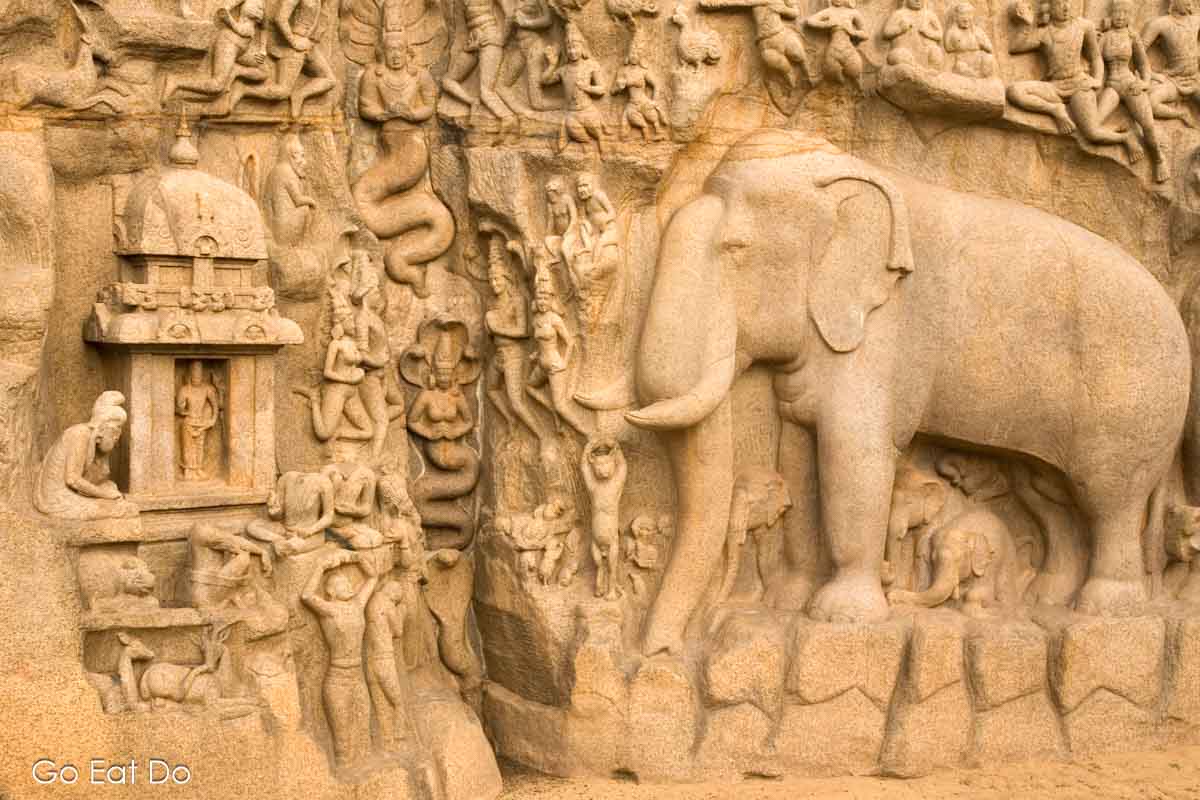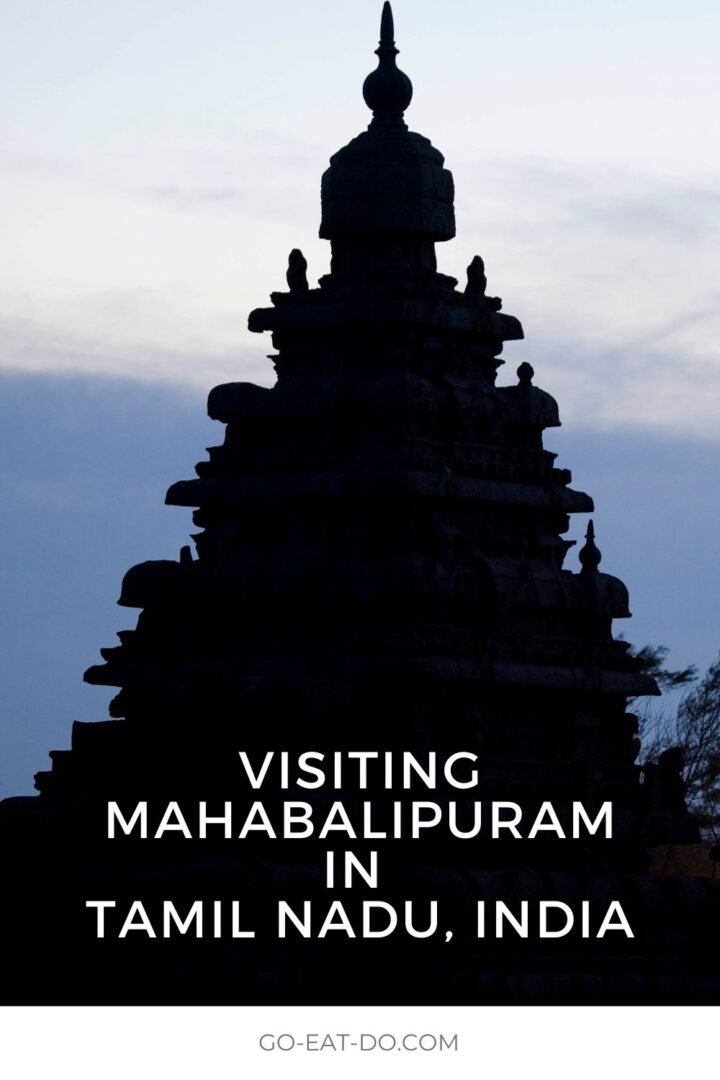Stuart Forster heads to Tamil Nadu, India, and looks at things to do and see while visiting Mahabalipuram, the coastal town also known as Mamallapuram.
Disclosure: Some of the links below and banners are affiliate links, meaning, at no additional cost to you, I will earn a commission if you click through and make a purchase.
Visiting Mahabalipuram
The coastal city of Mahabalipuram lies 60 kilometres (40 miles) south of Chennai. Known as Mamallapuram in Tamil, the principal language of Tamil Nadu, Mahabalipuram is a popular destination for backpackers and travellers who appreciate heritage while touring southern India.
I grew fond of Mahabalipuram while living in neighbouring Karnataka.
My first trip was to Mahabahipuram was shortly after the Sumatra-Andaman Earthquake that resulted in the Boxing Day Tsunami of 26 December 2004. In total, around 230,000 people died in that natural disaster. Entire communities were destroyed.
Looking out onto the Indian Ocean, Mahabalipuram was badly affected by the tsunami. Three locals died that day and the fishing fleet of traditionally built wood boats was largely wiped out.
Boxing Day Tsunami in Mahabalipuram
One local fisherman, standing ankle-deep in the mild Ocean water by his red-painted boat, told me he would have been unable to start again if it hadn’t been for the help of charities and Non-Governmental Organisations. Both his boat and his home were destroyed by the waves. He was one of many people whose livelihoods were impacted.
Souvenir sellers, hawking decorated seashells on the beach, grumbled “business is bad” and “tourists do not come” as I walked barefoot along the golden sand of Mahabalipuram.
Walking on Mahabalipuram beach
By necessity, normality quickly returned. Structural damage was visible but there was no discernible sadness hanging over the town, nor any negative legacy of disrupted services. People were getting on with their lives rather than dwelling on how the biggest natural disaster in living memory had affected them.
The beachfront is again popular with walkers and bathers, many of whom appear in the last hour of daylight, when the sun’s rays are softening.
Unlike Western beaches, people maintain their modesty. Women enter the ocean still dressed in their flowing salwar kameez. Sun tans are not desired.

Restaurants in Mahabalipuram
A reconstructed seafront restaurant has a sign about the impact of the tsunami. It serves fish and seafood landed by the town’s fishing fleet. Wooden boats unload their catch on the beach, just a cricket ball’s throw distant from the restaurant’s open terracing.
Tourism plays an important role in the local economy, so it was important for Mahabalipuram to recover quickly.
A wealth of ancient monuments and bas-relief stone sculptures is clustered around the town. Many date from the eighth and ninth centuries, the period during which the Pallava dynasty was at its most powerful.
UNESCO sites at Mahabalipuram
Mahabalipuram was the Pallavas’ main port, enabling trading across the Bay of Bengal.
The landmark Shore Temple at Mahabipurum is five storeys high and was built during the reign of King Nirimhavaram II. It is one of the oldest stone-built structures in southern India and among the reasons why Mahabalipuram is a UNESCO World Heritage Site.
The tsunami of Boxing Day 2004 also uncovered long-hidden monuments near the Shore Temple. For centuries, they had lain covered by sand.
For at least four centuries, rumours of buried temples known as ‘the seven pagodas’ circulated among locals. The story was dismissed as a myth. Since the tsunami, the rumours have gained credence.

Archaeological Survey of India
In recent years, archaeologists from the Archaeological Survey of India (ASI) have examined the remains of a temple approximately one-and-a-half times the size of the Shore Temple. A smaller structure is also on the same excavation site and several submerged man-made structures and stone blocks have been found in the sea.
Until 2009, Dr Alok Tripathi was a Deputy Superintendent Archaeologist at the ASI and headed its Underwater Archaeology Wing, which has conducted excavations around Mahabalipuram.
Dr Tripathi dispels the notion that structures were found only because of the tsunami. Instead, he points to successful cooperation between the ASI and the Indian Navy.
Underwater archaeology
Dr Tripathi rates the finds of 2004 and the excavations of 2005 as “very important.”
Unlike the Shore Temple, which was constructed on rock, the larger temple was built directly on the sand. This could have been a contributory factor in the survival of the Shore Temple.
Excavations have helped provide new details as to the chronology of the settlement at Mahabalipuram, valuable architectural information relating to aspects of temple building and information on how the shoreline and sea levels changed over time.
Walking in the city, years on from my first visit, confirms that Mahabalipuram has recovered from the tsunami’s damage and has much to offer casual visitors. The impressively sculpted Five Rathas and Tiger Cave Temple are among the chief attractions.
Possibly the best place to appreciate the intricacy and detail of Pallava era stone sculpting is in front of Arjuna’s Penance. The largest bas-relief sculpture in the world is inspired by an episode in the epic poem, the Mahabharata.
monuments in Mahabalipuram
Mahabalipuram is said to be home to ‘the most photographed monuments in India after the Taj Mahal.” Whether that is a recommendation to take a camera or simply to enjoy the over-snapped sights is open to question.
The skills of the stone masons from the Pallava period, over a millennium ago, have not been lost. Chisels were chipping away as I wandered through the town.
A local craftsman explained that local masonry schools teach the techniques used centuries ago to create the temples and stone carvings.
He promised me a good price on a knee-high statue of Ganesha, the pot-bellied, Elephant-headed god of wisdom and good beginnings. The ticks of chisel strikes marked time as we negotiated.

Map of Mahabalipuram
Zoom out of the map of Mahabalipuram to see the town’s location on the Bay of Bengal, south of Chennai:
Travel to Mahabalipuram
Mahabalipuram is approximately 60 kilometres (40 miles) south of Chennai. Journeys by road typically take a couple of hours.
Air India, British Airways and Emirates are among airlines operating flights between London and Chennai International Airport.
When to visit Mahabalipuram
The cooler part of the year, from October to March, is widely regarded as optimal for visiting Mahabalipuram.
Hotels in Mahabalipuram
Locate accommodation in and around Mahabalipuram using the map below:
Books about Tamil Nadu
Want to discover more about the Mahabalipuram and the surrounding region? The following books are available to buy from Amazon:
World Heritage Mahabalipuram: Architectural Wonder of the Curious Pallavas by Sainath Reddappa.
Journey Through Southern India by Mark Probert.
The Rough Guide to South India and Kerala.
Further information
For more information on places to visit in India, see the Incredible India! website.
Thanks for visiting Go Eat Do and reading this post on Mahabalipuram in Tamil Nadu, India. If you are planning on travelling in southern India, you may also enjoy my post about houseboating on the backwaters of Kerala.
The author of this post, Stuart Forster, has contributed to travel guides about destinations in southern India.
If you enjoyed this post, please sign up for the free Go Eat Do newsletter? It’s a hassle-free way of getting links to posts once a month.
‘Like’ the Go Eat Do Facebook page to see more photos and content.
A version of this post was initially published on Go Eat Do on 30 November 2013.




